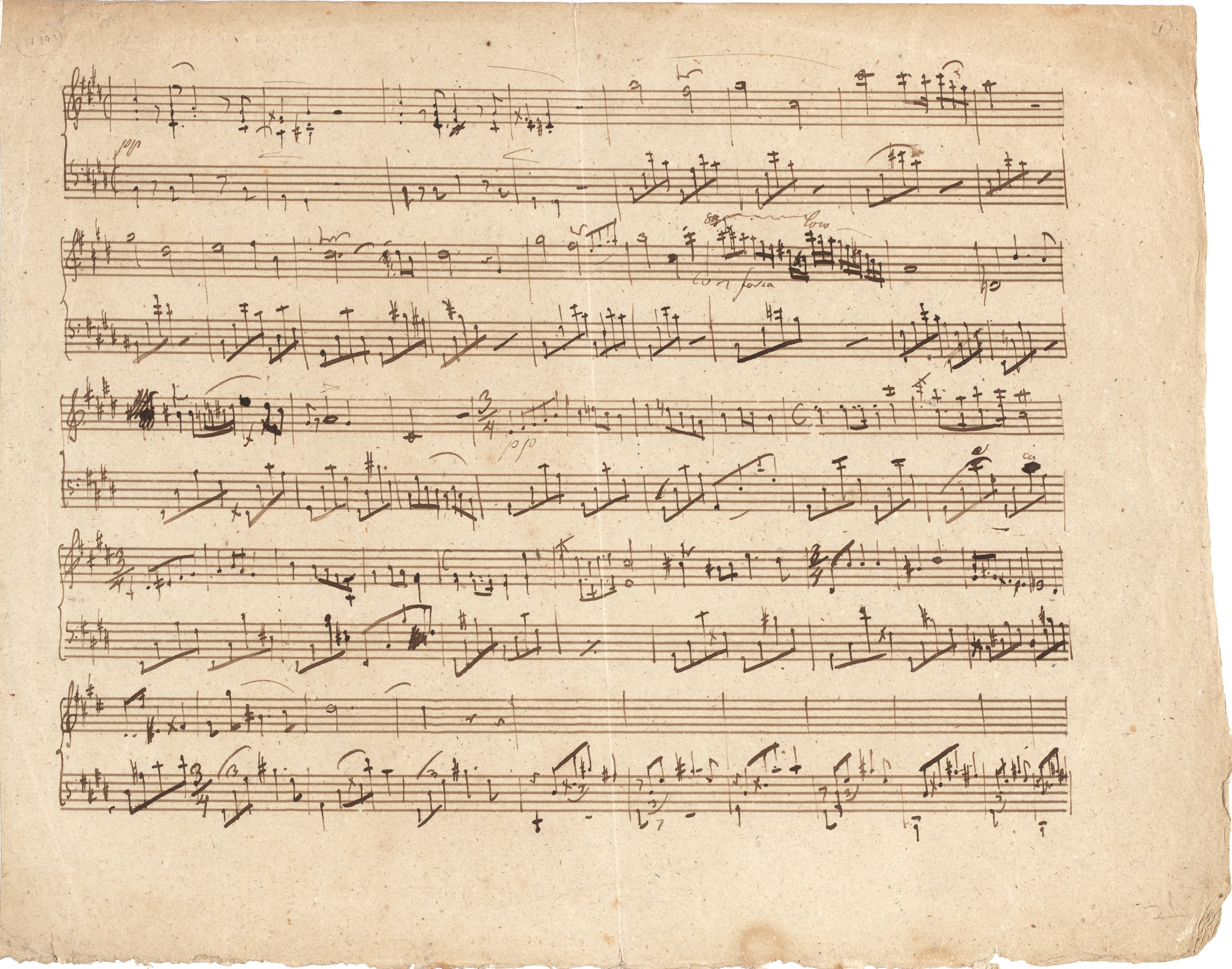



In A1 one can see that Chopin initially wrote this bar in a version analogous to b. 22 (compliant with the initial phrase of the third movement of the Concerto in F Minor, Op. 21), in which the 1st half of the bar is based on the F minor chord, whereas the second on the dominant in this key. However, he then changed the last R.H. notes in both halves of the bar and swapped the accompaniment figures so that the 1st half is reigned by the dominant, while the second – by the tonic. However, he performed the correction inaccurately – he forgot to change the penultimate L.H. note, thus leaving b. He included the second version also in [A2], already without mistakes and in a changed rhythm, which we give in the main text on the basis of CJ and CK. In this situation, the version of EL is puzzling, since it features the initial version of A1 written in the rhythm introduced in [A2]. The edition was based on Kolberg's copy, who was in possession of a text containing the corrected version. Theoretically, one can imagine that [A2] included two versions, with priority given to the version that was reproduced in the known copies by both Ludwika and Kolberg, e.g. in the form of a correction. An echo thereof could have been the correction of the last quaver in the 1st half of the bar in CJ – f
minor chord, whereas the second on the dominant in this key. However, he then changed the last R.H. notes in both halves of the bar and swapped the accompaniment figures so that the 1st half is reigned by the dominant, while the second – by the tonic. However, he performed the correction inaccurately – he forgot to change the penultimate L.H. note, thus leaving b. He included the second version also in [A2], already without mistakes and in a changed rhythm, which we give in the main text on the basis of CJ and CK. In this situation, the version of EL is puzzling, since it features the initial version of A1 written in the rhythm introduced in [A2]. The edition was based on Kolberg's copy, who was in possession of a text containing the corrected version. Theoretically, one can imagine that [A2] included two versions, with priority given to the version that was reproduced in the known copies by both Ludwika and Kolberg, e.g. in the form of a correction. An echo thereof could have been the correction of the last quaver in the 1st half of the bar in CJ – f 1 changed to c
1 changed to c 1. Curious about the correction, Kolberg could have marked its existence in some way and could have considered the earlier version to be better while preparing the Stichvorlage for EL:
1. Curious about the correction, Kolberg could have marked its existence in some way and could have considered the earlier version to be better while preparing the Stichvorlage for EL:
- it quotes the phrase from the Concerto more accurately,
- it avoids the parallel shift of the F
 minor and G
minor and G major chords (with parallel octaves in the outer voices) in combination with b. 27.
major chords (with parallel octaves in the outer voices) in combination with b. 27.
However, the above advantages are deceptive:
- diversifying the quote from the Concerto – generally, a means very typical of Chopin, which can be perfectly seen on the example of the variations of this motif in the very Concerto – it works rather to the advantage of the changed version;
- the combination of the F
 minor and G
minor and G 7 chords sounds more natural than the initial combination of C
7 chords sounds more natural than the initial combination of C 7 and G
7 and G 7, while parallel shifts are not uncommon in the piano texture, particularly if one of the elements of the first chord constitutes a dissonance also in the second one – cf., e.g. the Scherzo in E Major, Op. 54, b. 326-328.
7, while parallel shifts are not uncommon in the piano texture, particularly if one of the elements of the first chord constitutes a dissonance also in the second one – cf., e.g. the Scherzo in E Major, Op. 54, b. 326-328.
The presence of the corrected version already in A1 does not rule out the possibility of correcting [A2] too – the correction in A1 could have been simply introduced at the time of writing [A2], which could explain the fact that one of the notes was left uncorrected.
According to us, it is actually likely that Kolberg did not know the authentic initial version and changed the text on the basis of analogy with b. 22 only, convinced that he was smoothing an awkward voice leading – cf. other arbitrary changes in b. 35-36 and 39-40.
Compare the passage in the sources »
category imprint: Differences between sources; Corrections & alterations; Source & stylistic information
issues: Errors resulting from corrections, Errors of A, Corrections of AI, Kolberg's revisions, Revisions in EL
notation: Pitch





